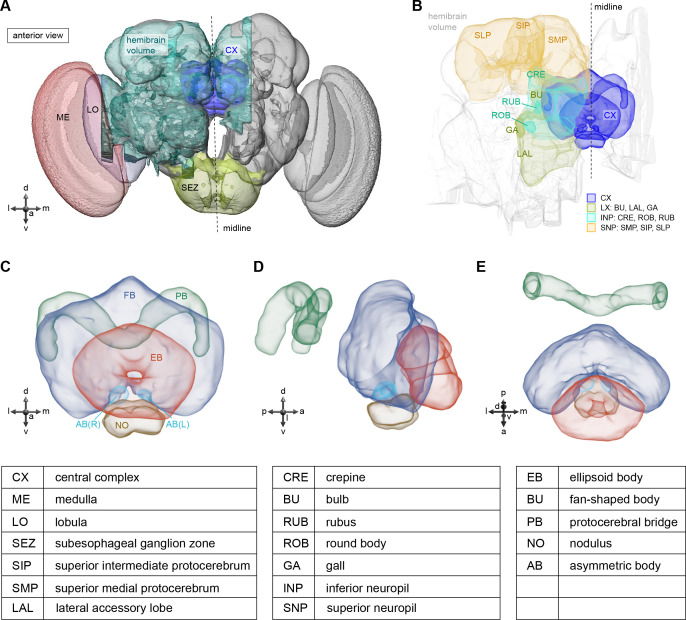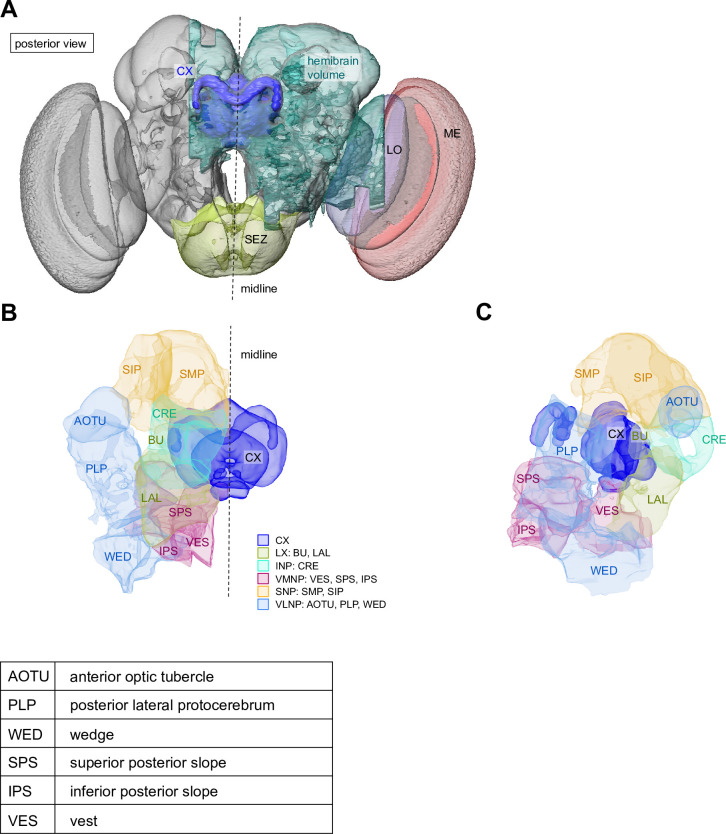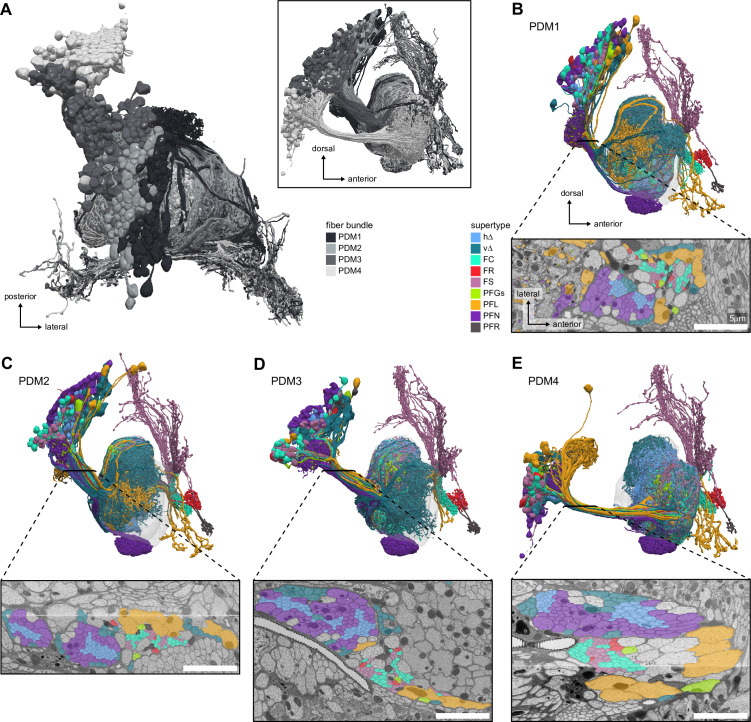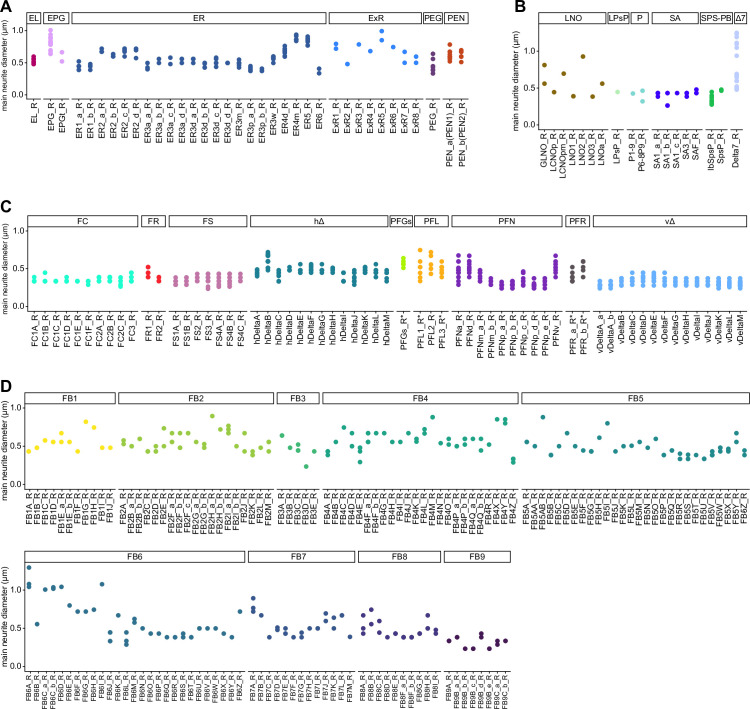Figure 1. The central complex (CX) and accessory brain regions.
(A) The portion of the central brain (aquamarine) that was imaged and reconstructed to generate the hemibrain volume (Scheffer et al., 2020) is superimposed on a frontal view of a grayscale representation of the entire Drosophila melanogaster brain (JRC 2018 unisex template [Bogovic et al., 2020]). The CX is shown in dark blue. The midline is indicated by the dotted black line. The brain areas LO, ME, and SEZ, which lie largely outside the hemibrain, are labeled. (B) A zoomed-in view of the hemibrain volume, highlighting the CX and accessory brain regions. (C) A zoomed-in view of the structures that make up the CX, the ellipsoid body (EB), protocerebral bridge (PB), fan-shaped body (FB), asymmetrical body (AB), and paired noduli (NO). (D) The same structures viewed from the lateral side of the brain. (E) The same structures viewed from the dorsal side of the brain. The table below shows the abbreviations and full names for most of the brain regions discussedin this paper. See (Scheffer, 2020) for details. Anatomical axis labels: d: dorsal; v: ventral; l: lateral; m: medial; p: posterior; a: anterior.




